What's New
Displaying results 2101 - 2110 of 4899
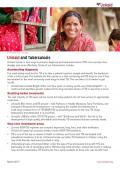
Resource | Fact Sheets,
Unitaid invests in new ways to prevent, diagnose and treat tuberculosis (TB) more quickly, more cheaply and more effectively. Some of the interventions include: accelerating diagnosis, enabling better treatments, and new core investment areas.
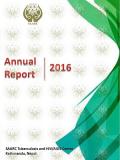
Resource | Publications,
This is the twenty-first consecutive comprehensive annual report of the SAARC Tuberculosis and HIV/AIDS Centre (STAC). The report provides summary of the activities carried out by the Centre for the year 2016 along with introduction, goals, objectives, vision, mission and achievements of the Centre.
STAC was set up in 1992, as a SAARC TB Centre which later on renamed as SAARC TB and HIV/AIDS Centre, working for prevention and control of TB and HIV/AIDS in the Region by coordinating the efforts of the National Tuberculosis Control Programmes and National HIV/AIDS Control Programmes of SAARC Member States (Afghanistan, Bangladesh, Bhutan, India, Maldives, Nepal, Pakistan and Sri Lanka).
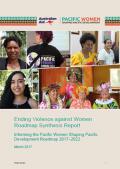
Resource | Publications,
The Pacific Women Shaping Pacific Development program (Pacific Women) aims to improve opportunities for the political, economic and social advancement of Pacific women in the 14 Pacific Islands Forum (PIF) member countries. The 10-year program is funded under the Australian Government’s aid program by the Department of Foreign Affairs and Trade (DFAT).
This report on ending violence against women (EVAW) aims to: guide future investments; prioritise approaches and activities; and provide a transparent and strategic framework for Pacific Women funding decisions. Key issues and recommendations from this report will be reflected in a single Roadmap Synthesis report – recognising the intersection between women’s economic empowerment, women and leadership and EVAW.
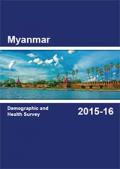
Resource | Publications,
The Myanmar Demographic and Health Survey (MDHS) 2015-16 is the first survey of its kind to be implemented in the country as part of the worldwide Demographic and Health Surveys (DHS) Program. It was implemented by the Ministry of Health and Sports (MoHS), with the objective of providing reliable, accurate, and up-to-date data for the country. We hope that the information in this report will assist policymakers and program managers in policy formulation and monitoring and designing programs and strategies for improving maternal, child health, and family planning services in Myanmar. This report presents the findings of the survey.
The 2015-16 MDHS is a national sample survey that provides up-to-date information on fertility levels; marriage; fertility preferences; awareness and use of family planning methods; child feeding practices; nutrition; adult and childhood mortality; awareness and attitudes regarding HIV/AIDS; women’s empowerment; and domestic violence. The target groups were women and men age 15-49 residing in randomly selected households across the country. In addition to national estimates, the report provides estimates of key indicators for both urban and rural areas in Myanmar and also for the 15 states and regions.
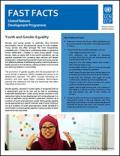
Resource | Publications,
Women, and young women in particular, face structural discrimination due to the patriarchal nature of most societies. Young women are often amongst the most marginalized, vulnerable and – if they live in rural/remote areas, or precarious human settlements – hardest to reach young people. Young women make up nearly half of the world’s population, yet are regularly prevented from accessing basic services and decent employment. Unleashing the potential of girls and young women is an effective pathway to addressing poverty, improving access to health, education and sanitation, making societies more inclusive and reducing violence in communities.
The promotion of gender equality and the empowerment of young women is central to UNDP’s mandate and intrinsic to its development approach. This effort includes advocating for women’s and girls’ equal rights, combating discriminatory practices and challenging the roles and stereotypes that affect inequalities and exclusion.
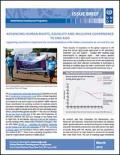
Resource | Publications,
Three decades of experience in the global response to HIV show that human rights-based approaches to HIV prevention, treatment, care and support – coupled with enabling legal environments to safeguard rights – help reduce people’s vulnerability to HIV. A rights based response to HIV helps ensure that services are accessible to those most at risk, and enables key populations and other affected communities to participate in deciding an enabling legal and policy environment, which can also have a direct impact on reducing HIV transmission.
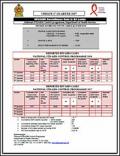
Resource | Fact Sheets,
National STD/AIDS Control Programme, Department of Health Service, HIV/AIDS Estimates for Sri Lanka as of end 2015
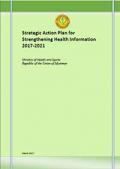
Resource | Publications,
The vision of the new Strategic Action Plan for Strengthening HIS in Myanmar 2017- 2021 is “A strong health information system for a strong health system”. The mission statement of HIS in Myanmar also developed during the strategic planning exercise is “Generating and making accessible comprehensive, integrated and timely health information for decision making at different levels of health system”. The goal of the HIS in Myanmar formulated during the assessment is “ To provide complete, valid, reliable and timely health information for making right decisions at the right time to ensure an equitable, effective, efficient and responsive health system”.
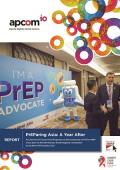
Resource | Publications,
APCOM’s new report “PrEParing Asia: A Year After” outlines the activities that have been ongoing within these eight countries, while also documenting the progressive steps taken in several additional countries within the region. Malaysia, Hong Kong SAR, Indonesia, Myanmar and Laos have conducted a country consultation or a smaller technical group discussion. Vietnam and the Philippines will soon launch the dissemination pilot project.






